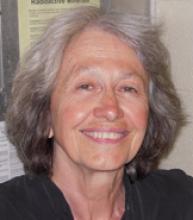T-Cell Tolerance and Memory Section
Polly Matzinger, Ph.D.
Chief, T-Cell Tolerance and Memory Section

Major Areas of Research
- Danger model of immunity
- Tissue-based class control
- Immune tolerance and activation
Program Description
The T-Cell Tolerance and Memory Section is engaged in elucidating the answers to fundamental questions in immunology:
- What turns an immune response on and off?
- How does the immune system remember its past encounters?
- What regulates the effector class of an immune response?
- How do tissues control local and systemic immunity?
The next major question of interest is, once the immune system decides to respond, how does it know what kind of response to make? A first answer to this question seems to be “local tissues send instructions to immune cells, guiding them to make the right kind of response.” The answer to this question has major implications for autoimmunity, cancer immunotherapy, and vaccine design. Anyone interested in pursuing these questions, and who would like to have conversations about these topics, please contact Dr. Matzinger.
Biography
Education
Ph.D., 1979, University of California, San Diego
B.S., 1976, University of California, Irvine
Polly Matzinger has worked as a bartender, carpenter, jazz musician, playboy bunny, and dog trainer. She is currently chief of the ghost lab and the section on T-Cell Tolerance and Memory. She worried for years that the dominant model of immunity does not explain a wealth of accumulated data and suggested an alternative, the Danger model, which suggests that the immune system is far less concerned with things that are foreign than with those that do damage. This model, whose two major tenets were conceived in a bath and on a field while herding sheep, has very few assumptions and yet explains most of what the immune system seems to do right, as well as most of what it appears to do wrong, covering such areas as transplantation, autoimmunity, and the immunobiology of tumors. The model has been the subject of a BBC "horizon" film and was featured in three other films about immunity, as well as countless articles in both the scientific and the lay press. In 2013, her section was assigned to the Laboratory of Immunogenetics.
Awards
1986: Köln Film Festival Award for Special Excellence in Educational Films, for Das Immunsystem (German translation of 'Immunity: the inside story'; also translated into French, Japanese, Spanish)
1996: Honorary lifetime member of the Scandinavian Society of Immunology
2002: Listed as one of The 50 Most Important Women in Science by Discover magazine, November 2002
2003: Honorary Doctorate from the Limburg’s Universitaire Centrum, Belgium
2008: Listed in Thompson’s “Highly Cited”
2009: The Fearless Scientist Award yearly scholarship given in honor of Polly Matzinger to a student at the University of Rhode Island
Selected Publications
Abdi K, Singh NJ, Matzinger P. Lipopolysaccharide-activated dendritic cells: "exhausted" or alert and waiting? J Immunol. 2012 Jun 15;188(12):5981-9.
Shulzhenko N, Morgun A, Hsiao W, Battle M, Yao M, Gavrilova O, Orandle M, Mayer L, Macpherson AJ, McCoy KD, Fraser-Liggett C, Matzinger P. Crosstalk between B lymphocytes, microbiota and the intestinal epithelium governs immunity versus metabolism in the gut. Nat Med. 2011 Nov 20;17(12):1585-93.
Matzinger P, Kamala T. Tissue-based class control: the other side of tolerance. Nat Rev Immunol. 2011 Mar;11(3):221-30.
Reines B, Cheng LI, Matzinger P. Unexpected regeneration in middle-aged mice. Rejuvenation Res. 2009 Feb;12(1):45-52.
Matzinger P. Friendly and dangerous signals: is the tissue in control? Nat Immunol. 2007 Jan;8(1):11-3.
Seong SY, Matzinger P. Hydrophobicity: an ancient damage-associated molecular pattern that initiates innate immune responses.Nat Rev Immunol. 2004 Jun;4(6):469-78.
Videos
Videos From T-Cell Tolerance and Memory Section Research
Matzinger P, Trauneker A. Immunity: the inside story [video].Basel, Switzerland: Hoffman La Roche; 1986. Video: 13 min. Translated into German, French, Spanish
Matzinger P. A quick look at tissue rejection [video]. Bethesda, MD: NIH Special Events Department and Capitol Studios; 1991. Video: 2 min.
Videos About T-Cell Tolerance and Memory Section Research
Friedman P. Death by design. 1995. Film: 73 min.
Award-winning film on apoptotic cell death that features the work of six scientists: P Matzinger, R Levy-Montalcini, M Raff, P Goldstein, KM Debatin, R Horowitz.
Mosley M. Turned on by danger. British Broadcasting Corporation; 1997. Film: 60 min.
A Horizon program made for public television featuring and delineating the danger model.
Green D. Microbe invasion. The Learning Channel; 2001. Film: 60 min.
A program describing the interrelationship between human bodies and the multitude of organisms that live on and within them. The film features the danger model as the model of immunity that best allows for symbiotic relationships within the body.

